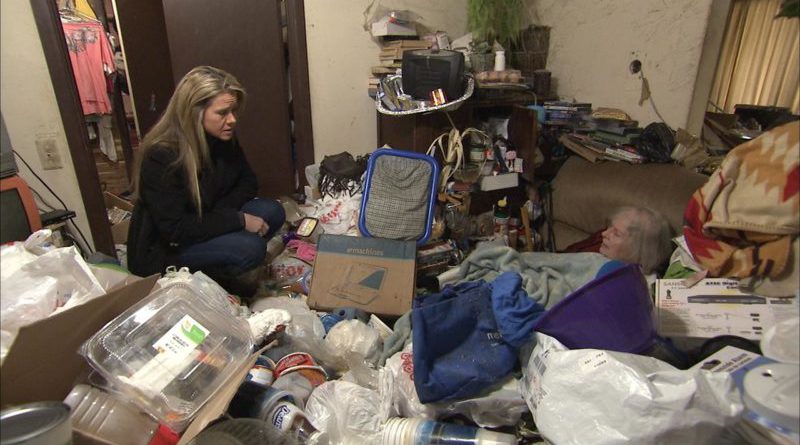INTERVIEW: ‘Hoarders’ returns with extreme, troubling cases on A&E
Photo: Hoarders features the expert advice of Dr. Robin Zasio. New episodes air Tuesdays at 8 p.m. on A&E. Photo courtesy of A&E / Provided with permission.
Hoarders, the successful reality series on A&E, follows individuals and families who are dealing with the daily difficulties of hoarding, an act of compulsive acquirement and storage of possessions.
This season, which continues Tuesdays at 8 p.m., the network has decided to offer two-hour episodes, letting viewers go even deeper into these often sad cases of individuals in need of help.
One of the experts for the show is Dr. Robin Zasio, who specializes in anxiety disorders. She has been associated with the series for a number of years.
“I own a facility in Sacramento, California, where I specialize in helping people with anxiety disorders, and I had another colleague who was on the show,” Zasio said in a recent phone interview. “And they had called her, and she couldn’t do it. And they said, ‘Well, do you know of anybody who specializes in hoarding?’ She said, ‘Yeah, call Dr. Zasio.’ And that was season two, and I’ve been here ever since.”
The doctor believes A&E has developed this show in the right way, mostly because of the network’s recognition of hoarding as a mental health condition. It’s not just another “clean-out” show that looks at clutter. Hoarders tells real stories about real individuals in difficult circumstances.
“It requires a trained specialist to be able to work with this population,” she said. “There are very specific treatment modalities that are recognized, and so when we’re on the show, we’re actually outlining the factors for that particular person that led to their problem, which can stimulate the thoughts of somebody who’s struggling to say, ‘Wow, well, if I had to look back, what are some of the things that I think contribute to my hoarding behavior?’ And then, if they’re willing to work with us, then we will walk them through the thinking patterns that contribute to the acquisition and the difficulty of letting go. We can walk them through day after day that, hey, you got rid of one dumpster, two dumpsters, three trucks, whatever it is, and look you’re OK. You’re not regretting it. I think it’s very encouraging and motivating for those who are very anxious and fearful about getting rid of their own stuff to see that maybe it won’t be as bad as they think.”
When making a diagnosis, Zasio and others who specialize in anxiety disorders are looking for specific criteria. It’s a lot more involved than simply looking for people who buy a lot of items at the store.
“What we’re typically seeing is the level of acquisition that they have in their home, their car, their office,” she said. “It’s not just isolated to their homes, which I think a lot of people think that it is. We’re looking for areas of the home that are taken over by this stuff. They might not be able to cook or put things away because there’s no room. They might not be able to get into their room, or they might not be able to sleep in their bed. And they’re sleeping on their stuff or their couch.”
Zasio described a continuum of symptoms, and Hoarders clearly shows the very extreme cases. They are often intervening in the lives of those who are in crisis mode; however, there are hoarding cases that are not as dire.
“There can be people that are still diagnosed with hoarding disorder that can be on a continuum of mild symptoms all the way up to the home has to be condemned because it’s been hoarded for so long, and there’s contaminants and structural issues,” Zasio said. “I think that at the end of the day, we really want people to look at how much stuff they have, and how much their stuff is interfering with their lives. Are they comfortable in their home? Can they come home and feel relaxed, and be able to engage with family members? Is the stuff causing conflict with their family members?”
Hoarders has only returned with five episodes, and that’s mostly because each individual installment now runs two hours. For Zasio, this allows the reality series to go even deeper with these issues.
“What’s really exciting about that is we can really go into more depth with the person who is struggling with their hoarding behavior and their family members,” she said, “and do more treatment with them and really be able to show the viewers what it is we do.”
By John Soltes / Publisher / John@HollywoodSoapbox.com
Hoarders continues with new episodes Tuesdays at 8 p.m. on A&E. Click here for more information.

